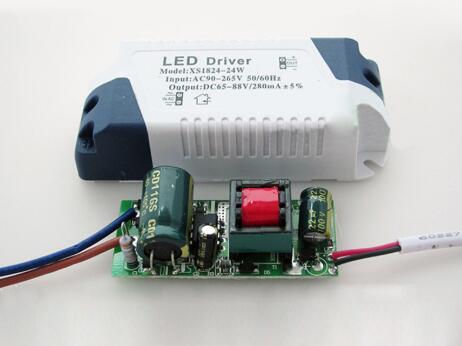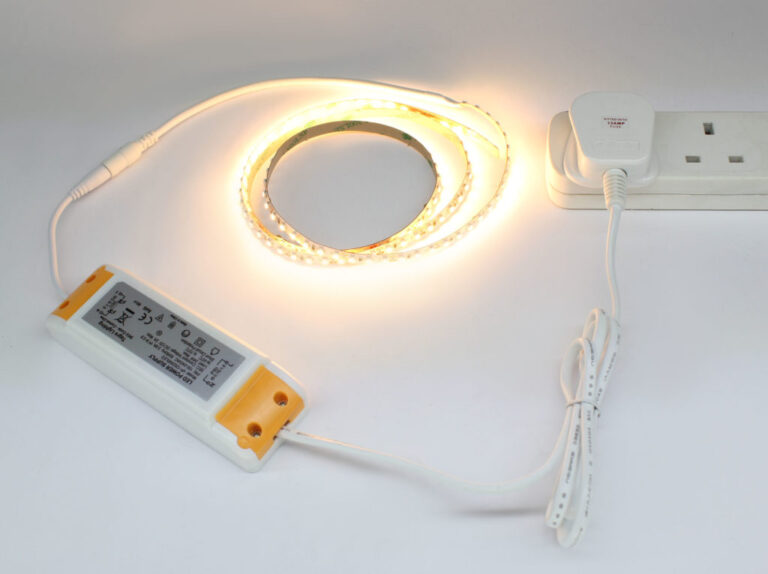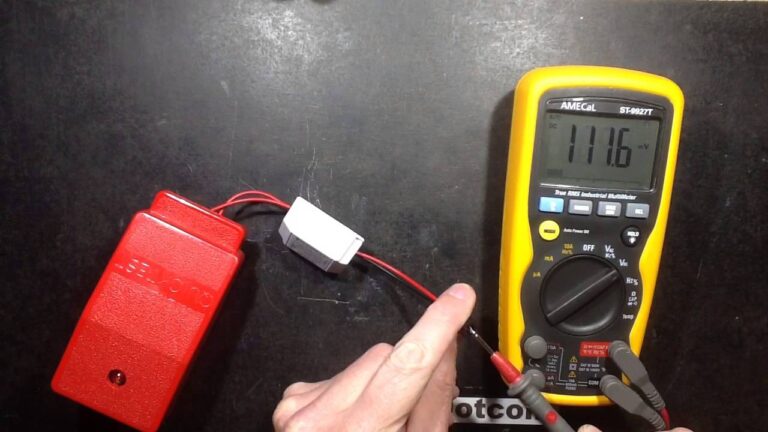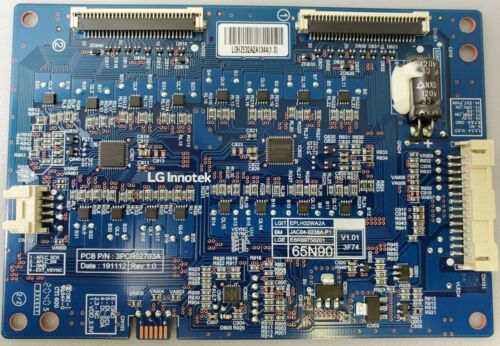Led Drivers Basics
An LED driver is a device that provides power to an LED light. It is also responsible for regulating the current and voltage going to the LED so that it does not burn out. The driver converts the AC power from your home or business into DC power which is what the LED needs to operate.
Depending on the type of LED, there are different ways to connect it to the driver. Some have built-in drivers while others require an external driver.
Led Drivers Basics
If you’re looking to upgrade your lighting,LED drivers may be the answer. LED drivers are devices that supply power to LED light fixtures. They convert AC power from the electrical grid into DC power that’s used by LEDs. How To Test Led Driver With Multimeter
This ensures that your LEDs have a consistent supply of energy, which is necessary for optimal performance. There are a few things to keep in mind when selecting an LED driver.
First, you’ll need to choose a driver with enough wattage to power your entire LED fixture.
Second, you’ll need to select a driver with the correct type of output for your needs.
Lastly, make sure the driver you select is compatible with the voltage of your LED fixture. Once you’ve selected the right LED driver for your needs, installation is relatively straightforward.
Most drivers come with detailed instructions on how to properly install them. Once installed, simply connect your LED light fixture to the driver and enjoy enhanced lighting in your home or business.Do All Led Lights Need A Driver?
What Led Driver Do I Need?
An LED driver is an electronic device that regulates the power supplied to an LED or a string of LEDs. A constant-current LED driver will maintain a constant current through the LED or string of LEDs, regardless of fluctuations in the input voltage or changes in temperature. A constant-voltage LED driver, on the other hand, will maintain a constant voltage across the load, meaning that the current flowing through the LEDs will vary according to their forward voltage drop.
The type of LED driver you need will depend on several factors, including:
– The type of LEDs you are using (e.g. SMD, COB, etc.)
– The operating voltage and current of your LEDs
– The desired brightness of your LEDs
– Whether you need dimming functionality
– Your budget
If you are not sure which LED driver to choose, it is always best to consult with an expert who can help you select the right one for your specific needs.
How Do Led Drivers Work?
An LED driver is a specialized power supply designed to drive an LED or group of LEDs. A good LED driver will provide the correct amount of current to the LED, while also protecting it from things like voltage spikes and electrical noise.
LEDs are typically driven by what’s called a constant current source.
This means that the current flowing through the LED is kept at a constant level, even as the voltage across it changes. The advantage of this is that it allows us to control the brightness of the LED by simply changing the voltage.
However, LEDs are also very sensitive to changes in current.
If too much current flows through an LED, it will burn out quickly. On the other hand, if not enough current flows through, the LED will be dim and may flicker. Therefore, it’s important to have a good LED driver that can provide a constant flow of current regardless of outside conditions.
There are two main types of LED drivers: linear and switch-mode. Linear drivers work by constantly regulating the voltage so that only a small amount of current flows through the circuit at any given time. This makes them very efficient but also quite expensive.
Switch-mode drivers work by rapidly turning on and off so that only an average amount of current flows through over time. This makes them less expensive but also less efficient.
How Do I Choose an Led Driver for My Led?
An LED driver is an electronic device that regulates the power supplied to an LED or a string of LEDs. A good LED driver will provide the correct amount of current to the LEDs so that they can operate at their full potential, while also protecting them from damage caused by electrical fluctuations. When choosing an LED driver, there are a few things you need to take into account in order to ensure you get the best possible performance from your LEDs.
The first thing you need to consider is the voltage rating of the LED driver. The voltage rating must be equal to or greater than the maximum voltage rating of the LEDs being used. If the voltage rating of the driver is too low, it could cause damage to the LEDs.
The next thing you need to consider is the current rating of the LED driver. The current rating must be equal to or greater than the maximum current draw of all the LEDs being used.
Why Do Led Drivers Fail?
LED drivers are designed to convert alternating current (AC) into direct current (DC), which is then used to power LED lights. However, LED drivers can fail for a number of reasons. The most common cause of failure is incorrect installation or wiring, which can damage the driver or the LEDs.
Other causes of failure include thermal runaway, over-voltage, and reverse polarity.

Credit: hitlights.com
Led Light Driver Circuit
When it comes to LED light driver circuits, there are a few things you need to know in order to make the best decision for your needs. Here is a detailed look at what you should keep in mind when choosing an LED light driver circuit.
The first thing you need to know is that there are two different types of circuits available, AC and DC.
AC circuits are more expensive but offer a higher quality of light. DC circuits are less expensive but don’t provide as much power.
Next, you need to decide how much power you need from your circuit.
The amount of power you need will depend on the number of LEDs you’re using and the type of application they’ll be used in. If you’re only using a few LEDs for general lighting, a lower-power circuit will suffice. However, if you’re using dozens or even hundreds of LEDs for high-intensity applications such as stage lighting, you’ll need a more powerful circuit.
Finally, consider the size and shape of your project when choosing an LED light driver circuit. If space is limited, look for compact models that can be mounted close to the LEDs themselves. For larger projects, there are also stand-alone units available that can be placed wherever convenient.
Led Driver Calculator
When it comes to LEDs, one of the most important factors is the driver. The driver is responsible for providing the correct amount of power to the LED and ensuring that it functions properly. There are a variety of different drivers on the market, but choosing the right one can be tricky.
That’s where a LED driver calculator comes in handy.
A LED driver calculator takes into account a number of different variables, such as the type of LED, the operating voltage, and the current draw. With this information, it can then calculate the ideal driver for your needs.
This is a valuable tool for anyone who is looking to use LEDs in their project, whether it’s for lighting or some other application.
There are a few things to keep in mind when using a LED driver calculator. First, make sure that you’re using accurate information about your project.
Second, remember that the results are only meant to be used as a guide; ultimately, it’s up to you to choose the right driver for your specific project.
Types of Led Drivers
There are many different types of LED drivers on the market today. Here is a brief overview of the most common types to help you choose the right one for your application.
Constant current LED drivers maintain a constant current flow to the LEDs, regardless of fluctuations in the input voltage or changes in temperature.
This ensures that your LEDs will always receive the correct amount of current, which is important for maintaining consistent light output and preventing premature failure. These drivers are typically used in applications where precise lighting control is required, such as display cases or under-cabinet lighting.
Constant voltage LED drivers supply a constant voltage to the LEDs, regardless of fluctuations in the input voltage or changes in temperature.
This type of driver is typically used with LEDs that have built-in current regulation, such as those used in string lights or holiday decorations. While constant voltage drivers are less expensive than constant current drivers, they are not as well suited for precision lighting applications since the output voltage may vary slightly over time.
Dimmable LED drivers allow you to adjust the brightness of your LEDs by changing the amount of current that flows through them.
These drivers typically use Pulse Width Modulation (PWM) to control the brightness of the LEDs, and they can be controlled manually or via a dimming controller. Dimmable LED drivers are ideal for applications where you want to be able to change the light level, such as task lighting or accent lighting.
Replacement Led Drivers
There are a few reasons you might want to replace the LED driver in your fixture. Maybe the old one failed and needs to be replaced, or maybe you’re upgrading to a new, more energy-efficient model. Either way, it’s not a difficult task – just follow these steps and you’ll have your new LED driver installed in no time!
First, turn off the power to your fixture at the breaker box. Then, remove the old LED driver from the fixture (it will likely be mounted on either the back plate or inside the housing). You may need to remove some screws or release clips to do this – just consult your fixture’s documentation for specific instructions.
With the old driver removed, simply install the new one in its place. Make sure all of the connections are tight and secure before turning the power back on. Once everything is hooked up, flip the switch at the breaker box and test out your new LED driver!
How to Tell If Led Driver is Bad
If your LED light is flickering, dimming, or just not working as it should, there’s a chance the LED driver is to blame. Here are a few ways to tell if your LED driver is bad:
1. Check for visible damage.
If the LED driver looks damaged or has any broken parts, it’s likely not working properly.
2. Test the voltage output. Use a voltmeter to test the voltage output of the LED driver.
If it’s not within the proper range, the driver is likely bad.
3. Swap out the driver with a known good one. This is the best way to definitively tell if an LED driver is bad.
If swapping in a new driver fixes the problem, you know you had a bad driver!
Led Driver Ic
A LED driver IC is a specialized microcontroller that is designed to control the operation of a LED or group of LEDs. The most common type of LED driver ICs are those that control the current flowing through the LED, in order to regulate its brightness. These types of ICs are typically used in conjunction with a power supply and an external resistor to create a complete circuit.
Other types of LED driver ICs may also include features such as thermal management, fault protection, and dimming control.
Led Driver Price
The average price of a LED driver can vary depending on the type, brand, and features. However, you can typically expect to pay between $30 and $100 for a quality LED driver.
There are several things to keep in mind when shopping for an LED driver.
First, you’ll want to make sure that the driver is compatible with the LEDs you’re using. Second, you’ll want to consider the wattage output of the driver. The higher the wattage output, the more expensive the driver will be.
Finally, take a look at the features offered by different drivers and choose one that offers what you need at a price you’re comfortable with.
With so many factors to consider, it’s important to do your research before buying an LED driver. By taking the time to find a quality product at a fair price, you can ensure that your LEDs will last for years to come.
Led Driver Connection
In this blog post, we’ll be discussing LED Driver Connection in detail. An LED driver is a device that provides the power necessary for an LED to function properly. The type of driver you need will depend on the type of LEDs you’re using and the application they’ll be used in.
There are three main types of drivers: AC-driven, DC-driven, and constant current drivers. AC-driven drivers are typically used for low-power applications such as small electronics or Christmas lights. DC-driven drivers are more common and can be used for a variety of applications, including general lighting, automotive lighting, and high-powered LEDs.
Constant current drivers are designed specifically for LEDs and provide a consistent amount of current regardless of fluctuations in voltage. This makes them ideal for use in outdoor or industrial applications where voltage fluctuates often. When choosing an LED driver, it’s important to consider the power requirements of your application as well as the environment it will be used in.
Drivers come in a variety of sizes and voltages, so it’s important to choose one that’s compatible with your LEDs and their intended use.
Conclusion on Led Drivers Basics
In this blog post, we’ll be discussing the basics of LED drivers. We’ll cover what they are, how they work, and some of the benefits of using them. Hopefully, by the end of this post, you’ll have a better understanding of LED drivers and why they’re so important for LED lighting systems.




